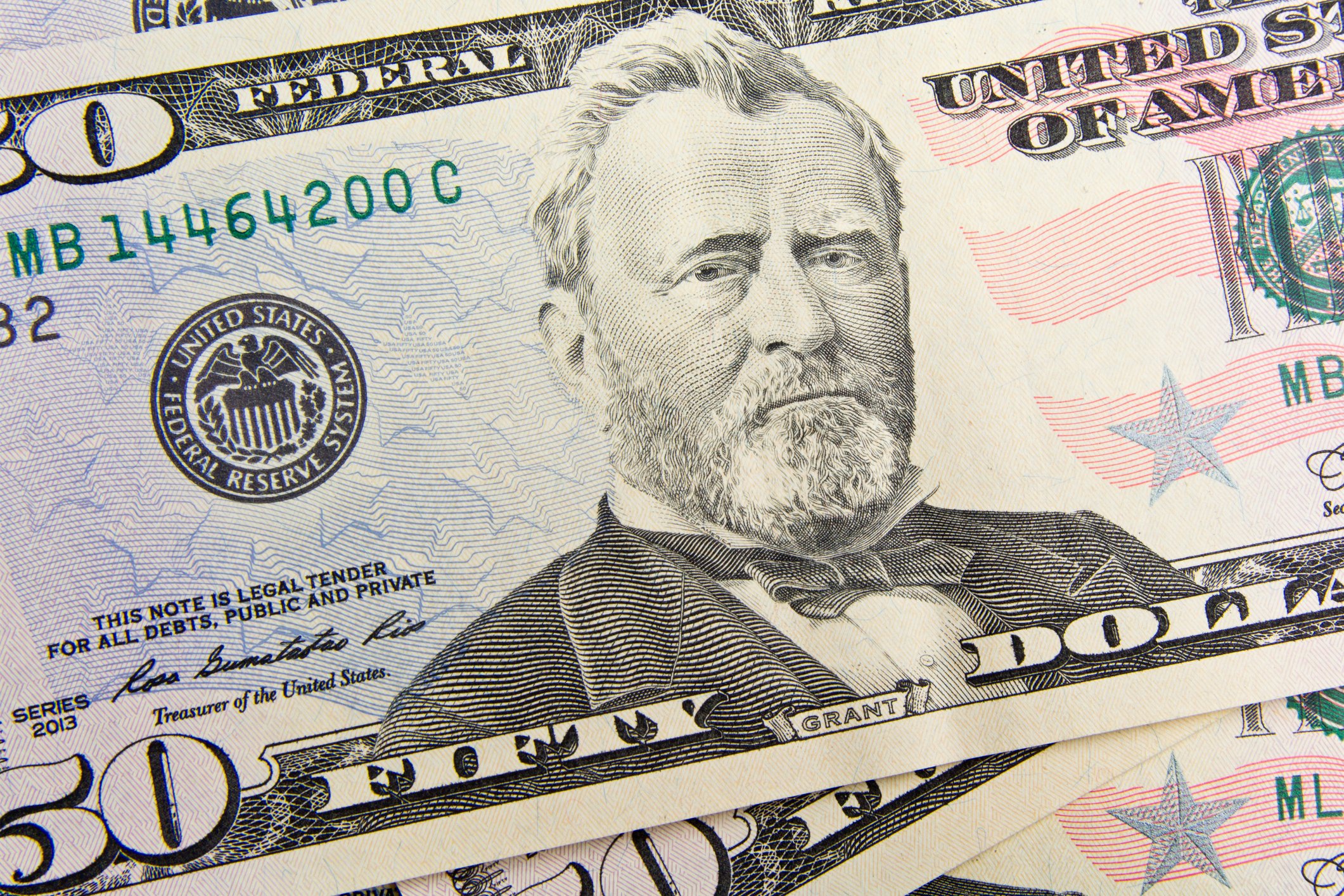Welcome to 2020, where investor expectations can safely be left at the front door. The coronavirus disease 2019 (COVID-19) pandemic has led to unprecedented levels of volatility in equities, with investors enduring the fastest bear-market decline in history, as well as the strongest quarterly rally in 22 years. Frankly, no one knows what to expect next.
Perhaps the closest thing that can be offered as a guarantee is that long-term investors have a great chance to make money during periods of heightened volatility. That's because every stock market correction in history has eventually been erased by a bull-market rally. We may not know when corrections will occur, how long they'll last, or how steep the decline will be, but we do know that history is on the side of long-term optimists.
Best of all, you don't need a fortune to make one on Wall Street. Adding small sums of money to great stocks on a consistent basis can lead to significant wealth creation over time. If you have even $50 you can spare for investments that won't be needed to cover bills or emergencies, then you have more than enough to buy into these great stocks.

Image source: Getty Images.
Wells Fargo
One of the smartest stocks you can consider buying with $50 is money-center giant Wells Fargo (WFC 0.42%). Although bank stocks are cyclical, which means they're liable to see interest income shrink and loan delinquencies rise in the near term due to COVID-19, Wells Fargo is uniquely positioned to thrive in the years to come.
First of all, investors should understand that public relations gaffes rarely, if ever, have a lasting impact on the banking space. Wells Fargo was hammered following its 2016-2017 admission that its physical branches opened 3.5 million fake accounts. While this has cost Wells Fargo in recent years, history has shown that consumers have short-term memories when it comes to their bank of choice. Wells Fargo has always had a knack for attracting more affluent clientele, and I suspect this will continue to be the case going forward.
Historically, Wells Fargo is also a money machine for investors. It typically generates some of the highest return on assets among major banks and has seen its bread-and-butter growth engine -- retail-banking loans and deposits -- headed in the right direction.
Investors can currently buy Wells Fargo at a mere 63% of its book value, which is the cheapest this company has been since at least the financial crisis. Wells Fargo isn't going anywhere, and long-term investors would be wise to grab this bargain while it lasts.

Image source: Getty Images.
Teva Pharmaceutical Industries
Another great way to put that Ulysses S. Grant $50 bill in your wallet to work would be to buy shares of brand-name and generic drugmaker Teva Pharmaceutical Industries (TEVA +0.11%). Though Teva has had its fair share of issues in recent years, it's on pace for one heck of a turnaround, whether Wall Street is ready or not.
The biggest catalyst for Teva Pharmaceutical is CEO Kare Schultz. Schultz is a turnaround specialist who, in less than three years, has whipped Teva into shape. Under his leadership, Teva has trimmed $3 billion off of its annual operating expenses, as well as sold off non-core assets that, in combination with operating cash flow, have helped to reduce net debt by almost $10 billion ($34.2 billion to $24.3 billion). Though work is still to be done, Schultz has dramatically improved Teva's financial flexibility and positioned the company for mid-single-digit earnings growth for the foreseeable future.
Teva also stands to benefit from an aging global population. As one of the largest generic-drug companies on the planet, Teva's pricing power on generic drugs and volume sold should improve on an annual basis as brand-name therapies continue to push patients toward less-costly treatment options.
At less than five times Wall Street's projected earnings per share for 2021, Teva looks like a bargain for patient investors.

Image source: Getty Images.
AT&T
Long-term investors should also consider putting their $50 to work in telecom giant AT&T (T 0.43%). The company isn't going to offer the same high-paced growth rate as most tech stocks, but it'll certainly make up for it with a superior dividend. AT&T investors can expect to double their money with the dividend alone (if reinvested) about once a decade.
The interesting thing about AT&T is that it has some catalysts on the horizon. The company has begun rolling out 5G network upgrades and will likely continue doing so throughout the country in the months and years to come. While these are expensive infrastructure investments, the payoff will be worth it. The first wireless infrastructure upgrade in a decade should lead to a multiyear wireless-device upgrade cycle. And since AT&T Wireless' juiciest margins come from data consumption, this should lead to steady organic growth.
AT&T also has an opportunity to make inroads as a provider of streaming services. Following the launch of HBO Max in late May, AT&T managed to boost its combined HBO and HBO Max customers to 36.3 million. That's up approximately 1.7 million from where it began the year. AT&T is aiming to have 80 million streaming customers worldwide by 2025.
As I said, AT&T isn't going to deliver eye-popping growth -- but it's going to allow income seekers to sleep very well at night.

Image source: Sirius XM.
Sirius XM
Finally, I'd encourage investors to consider putting their $50 to work in satellite-radio operator Sirius XM (SIRI +0.00%).
As some of you may already know, Sirius XM benefits from being the lone satellite-radio operator. This isn't to say that it's completely free of competition, but it does afford the company a long growth runway and provide cash flow protection that isn't available to terrestrial and online radio operators.
One of the unique aspects of Sirius XM is how the company generates money. Whereas most radio providers are ad-based businesses, Sirius XM derives most of its revenue from subscriptions. This is a key difference, because ad revenue tends to dry up during economic contractions and recessions. Comparatively, high-margin subscription revenue sees much less churn.
In the June-ended quarter, Sirius XM saw a 31% decline in ad revenue (primarily from its Pandora service), but reported a nearly 3% increase in subscription revenue from the prior-year period. This subscription revenue accounted for 84% of total Q2 sales.
Additionally, the beauty of Sirius XM's model is that some of its costs are relatively fixed. This is to say that transmission expenses aren't going to increase simply because it has more net subscribers. This would seem to be a formula for operating margin expansion over time.






